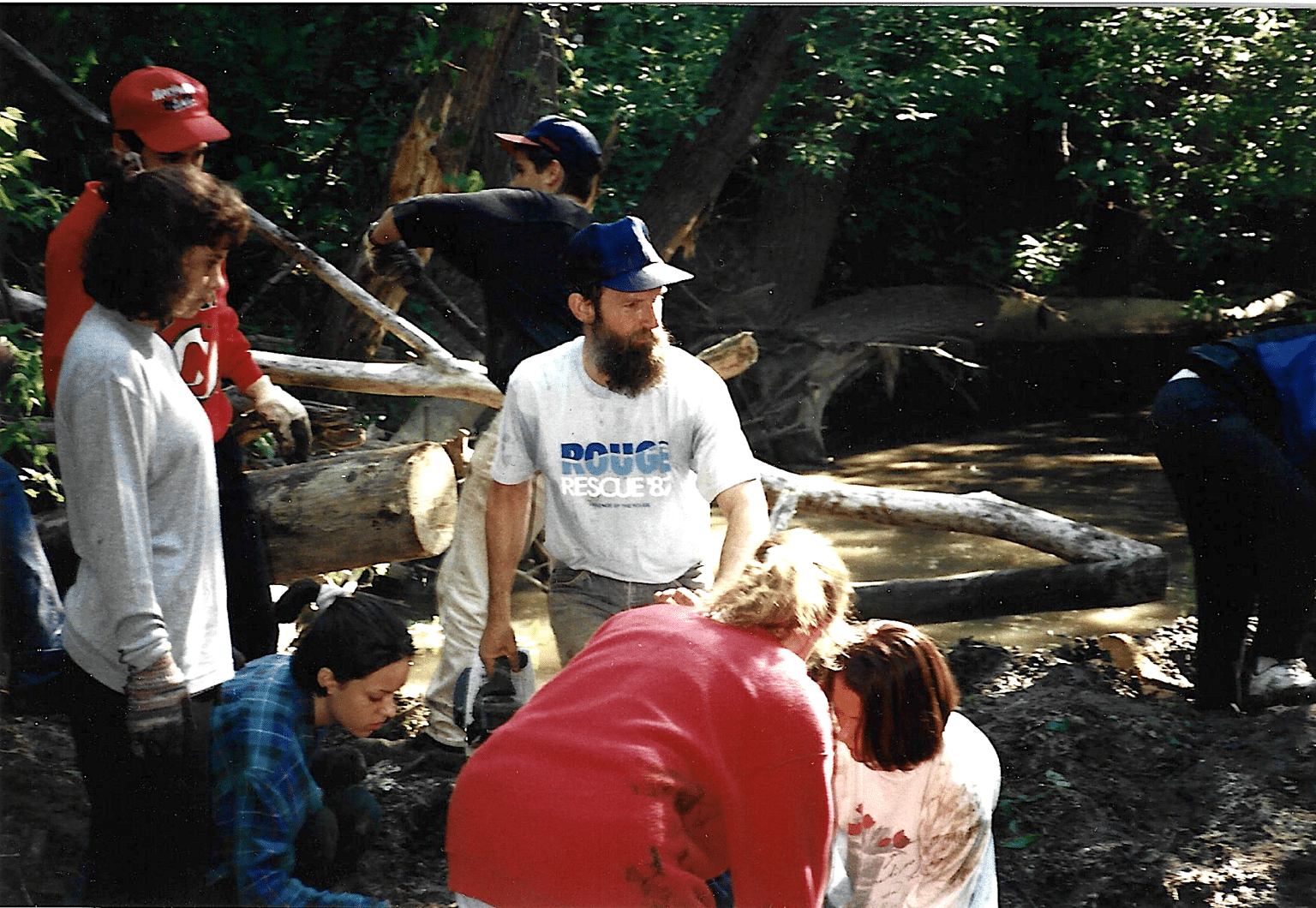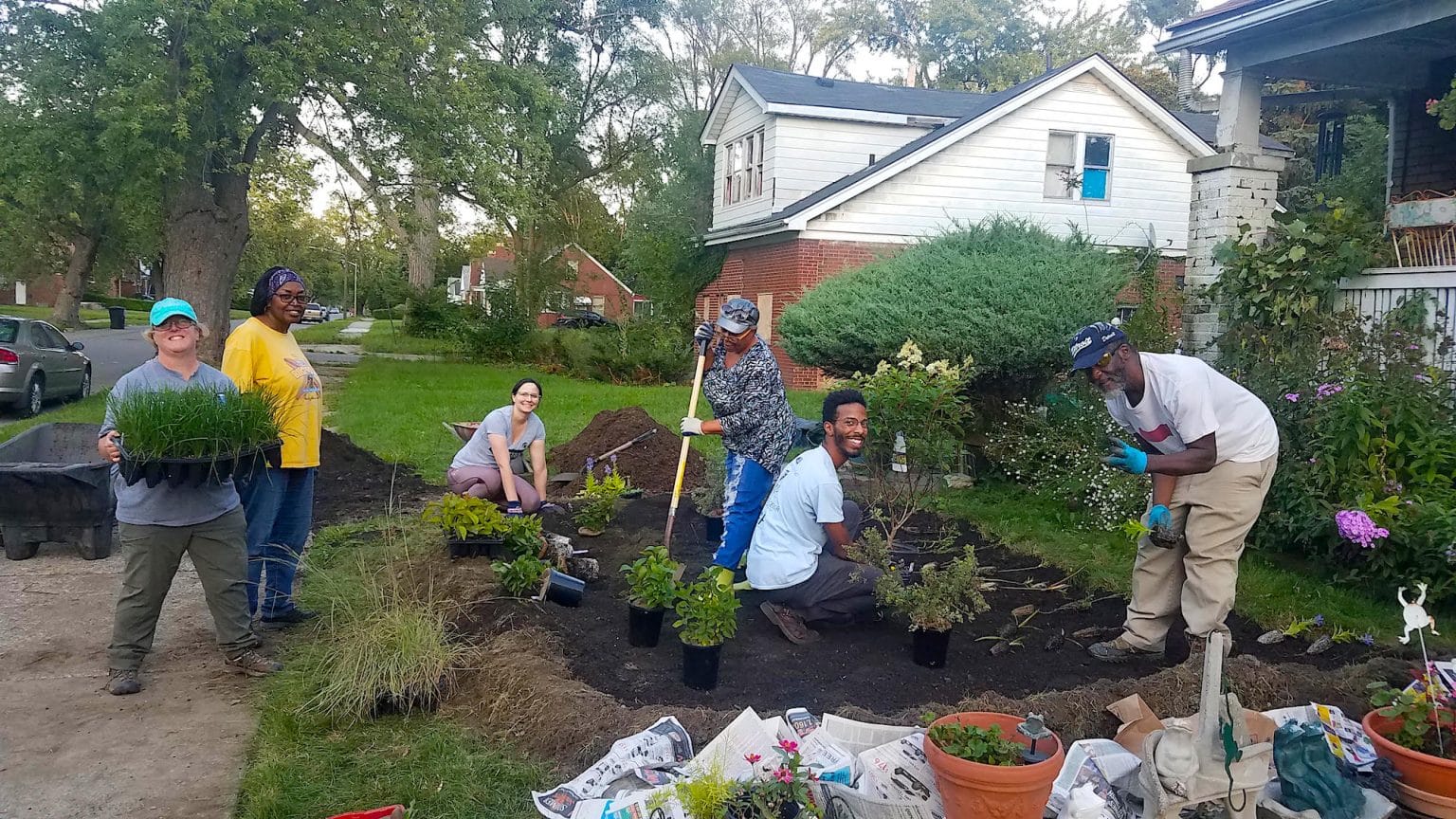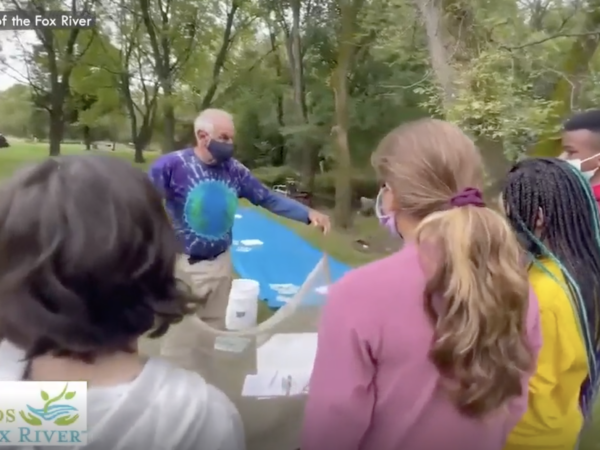
By Zach Lassen
This article was republished here with permission from Planet Detroit.
This story is from Planet Detroit’s Neighborhood Reporting Lab, where community reporters write about health and climate issues in their neighborhood. Neighborhood Reporting Lab is supported by the Americana and Kresge Foundations.
Bill Craig has been fighting to save the Rouge River for 35 years. In 1988, when Wayne County launched a proposal to turn the Holliday Nature Preserve into a golf course, Craig decided to get involved to stop this from happening.
Through efforts including community activism, picketing, writing letters to politicians, and raising public awareness, the proposal was dropped.
“The politicians saw that maybe this was not a good idea, and they changed their mind,” Craig told Planet Detroit. The Holliday Nature Preserve remains in Westland today.
Craig’s work to protect the nature preserve opened his eyes to the environmental pollution that he had previously ignored.
As a kid growing up in Garden City, he played in the Rouge River with his brothers, searching for frogs and turtles, unaware that the river teemed with the bacteria E. coli which can make people sick.
While cleaning the Tonquish Creek, which flows through the Holliday Nature Preserve, he was unaware of a dump site nearby leaking toxic chemicals into the creek.
“There was an element of ignorance of the conditions in our environment,” he said.
With suburban development expanding in the 1970s, Craig noticed fewer frogs and turtles, and more people. The landscape changed from rural farmland to strip malls with concrete parking lots and fewer natural trees.
Craig said the environment today is very different from what he remembers as a kid.
“It’s different, it’s struggling, it’s stressed, and it’s going to be hard to recover… I want to be on the team that recovers this,” he said.
More than 35 years later, Craig is still fighting to save the environment with a continued focus on the Rouge River.

Bill Craig worked on cleaning up the Rouge River back in 1994. Courtesy photo.
Beginning in the 1940s, businesses started using the Rouge as a dumping ground for industrial pollution. The river caught fire in 1969 and caused the death of a 23-year-old man in 1985 after he fell in, ingested some water and got infected with rat fever.
These events galvanized local activists to form Friends of the Rouge in 1986. Their flagship program, Rouge Rescue, is an annual event where they organize volunteers across the watershed to remove trash from the river.
Craig became a Rouge Rescue coordinator and a member of FOTR in 1989. He got involved after the protests coalesced into the Holliday Nature Preserve Association, which shared many members with FOTR. He has remained active with both organizations.
Today, Rouge Rescue focuses on restoration with volunteers removing invasive species, managing the wood in the river and planting native plants to stabilize the river banks.
The Rouge River watershed has come a long way since it was designated an Area of Concern in 1987 through the Great Lakes Water Quality Agreement. Thanks to the cleanup efforts of FOTR and millions of dollars of investment from the Environmental Protection Agency and state agencies, the river is now clean enough for a 27-mile-long water trail where people can kayak and canoe.
“It’s really wonderful to have our Lower Rouge Water Trail. We’re getting some kayak launches, and they’re doing lots of log jam removals to make that paddle-able,” Restoration Coordinator Jaclyn Heikkila told Planet Detroit.
Nine habitat restoration projects within the Rouge Area of Concern, costing $12.7 million, have been completed or will be completed soon. The EPA, with help from state and local partners, is coordinating these efforts.
“There is still lots of work to be done, but I think there definitely has been progress. And hopefully, the public sees and gets to experience that,” Heikkila said.

Friends of the Rouge and volunteers plant a rain garden in a Detroit resident’s front yard to capture and manage stormwater with native plants. Courtesy photo.
FOTR and the University of Maryland’s Center for Environmental Science published a report card for Southeast Michigan’s watersheds last month. The first-of-its-kind socioenvironmental Rouge River Watershed report card measured the health of the watershed with six categories: water, recreation, human health, infrastructure, economy, and the ecosystem.
According to the report, the Rouge River and its watershed are in poor condition, receiving an overall score of 36% or a D+.
“If we didn’t do anything it would all be an F,” Craig said. “That’s the hard measure of how long it takes and how much investment has to be made to do it.”
Catch more news at Great Lakes Now:
A Detroit renter’s quest for drinking water clarity
Composting, water access and backyard chickens: Detroit’s urban farming evolution
Featured image: Bill Craig kneels next to a jack-in-the-pulpit flower near the Rouge River. Photo by Zach Lassen.




